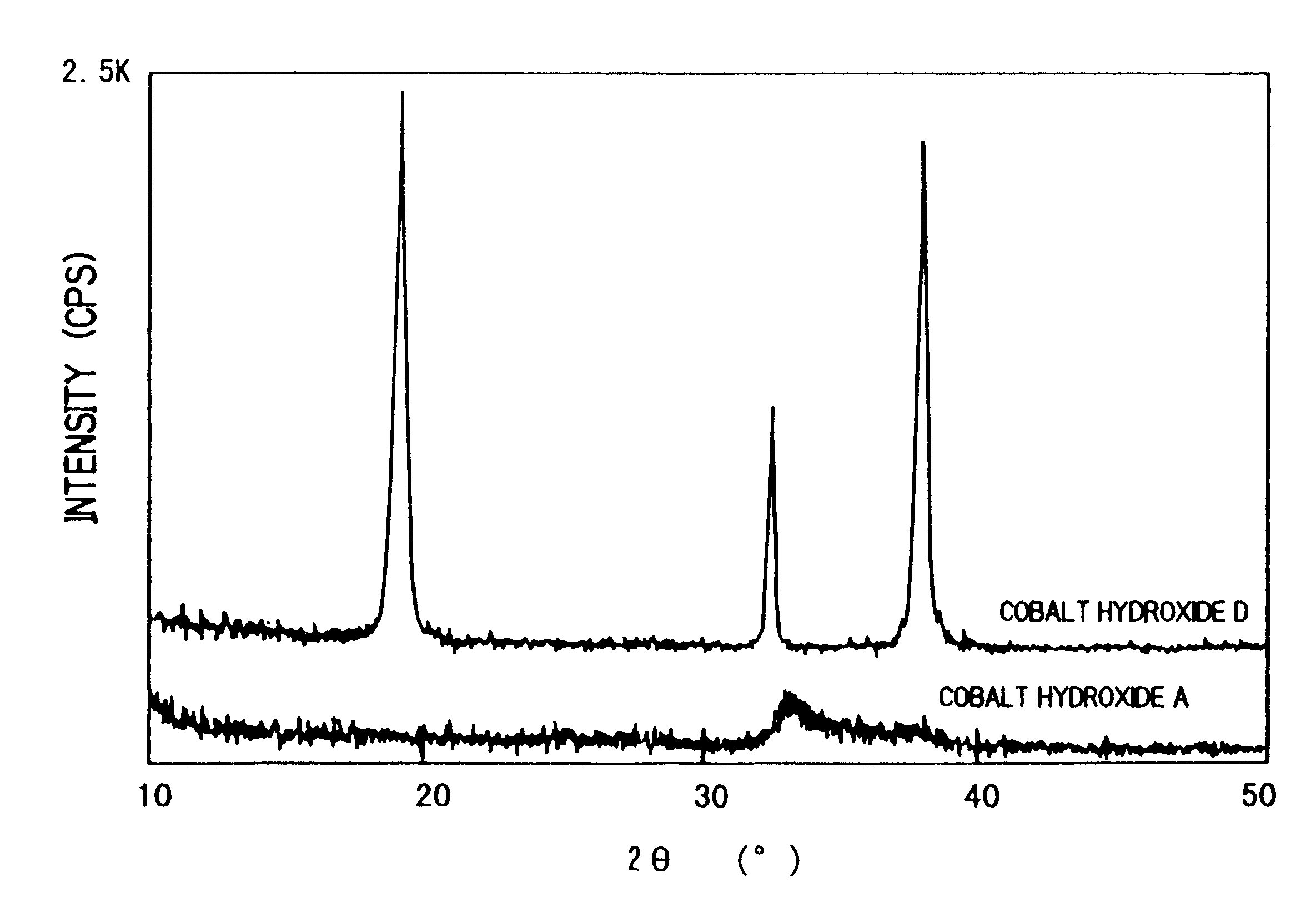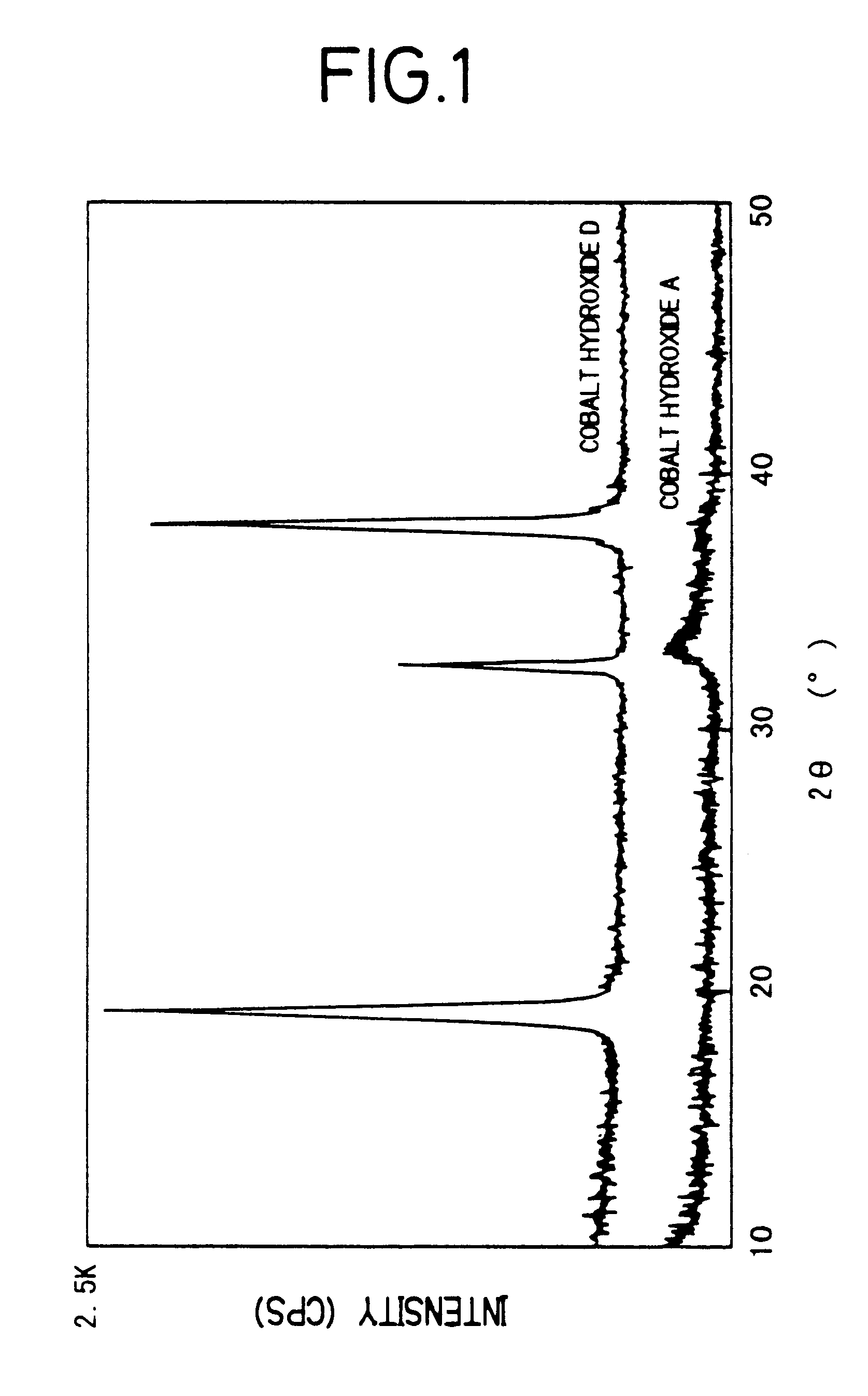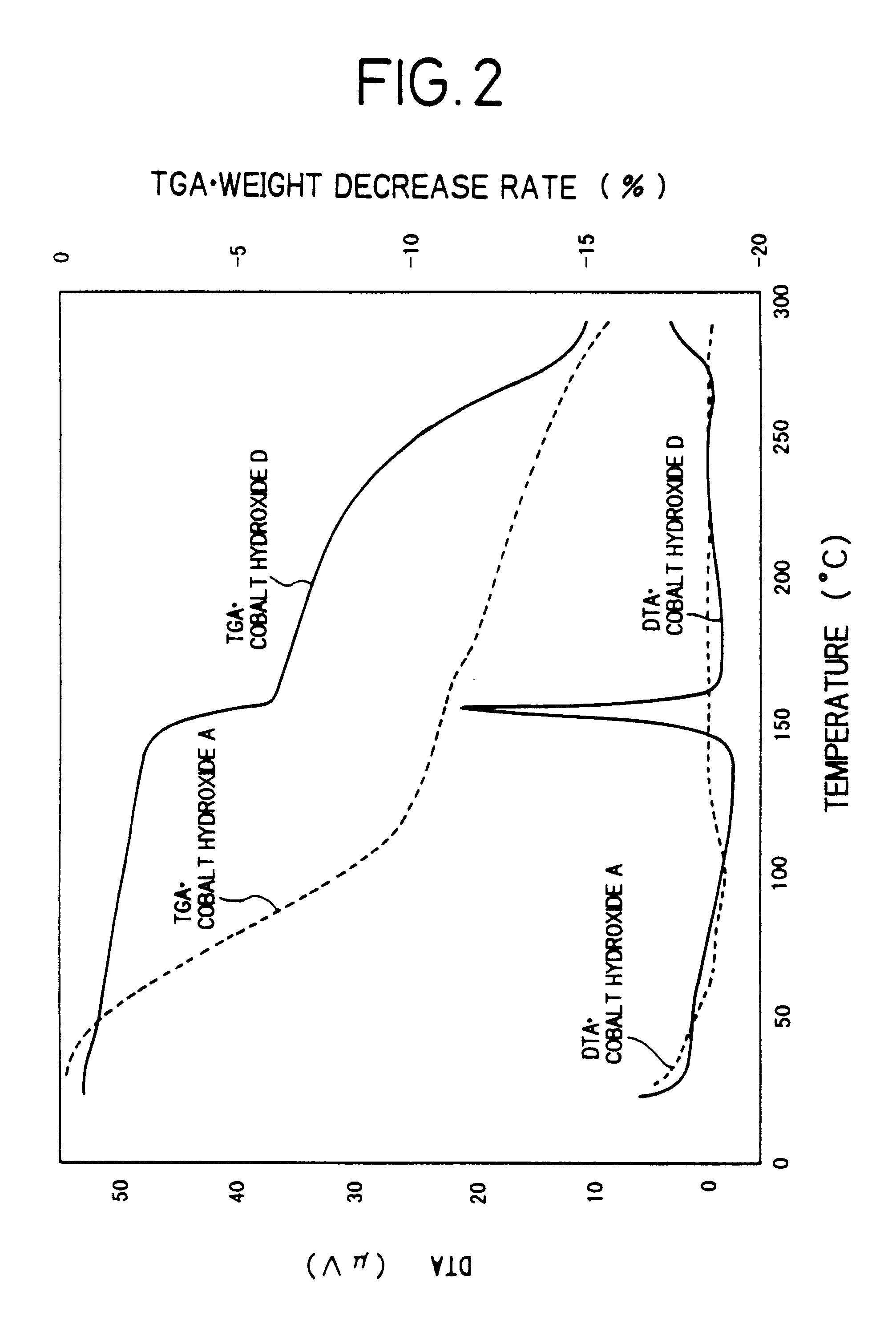Method for manufacturing positive pole active material for alkaline secondary battery, paste nickel pole, and alkaline secondary battery and method for manufacturing thereof
a technology of positive pole active material and alkaline secondary battery, which is applied in the direction of sustainable manufacturing/processing, nickel compounds, cell components, etc., can solve the problems of reducing the utilization rate of active materials, affecting the efficiency of production, and affecting the quality of production, so as to achieve good working efficiency, high reactivity, and easy to oxidize
Inactive Publication Date: 2001-07-10
THE FURUKAWA BATTERY CO LTD
View PDF7 Cites 20 Cited by
- Summary
- Abstract
- Description
- Claims
- Application Information
AI Technical Summary
Benefits of technology
Furthermore, the present invention is to provide a preferable one of the above-mentioned alkaline secondary batteries and it is characterized in that the preliminary charging is carried out with a quantity of electricity corresponding to 30% or more of such a quantity of electricity that is necessary for oxidizing cobalt hydroxide contained in the nickel electrode to become a trivalent state (CoOOH). In this case, it is preferable that the quantity of electricity for charging is carried out in the range of 30% 300% Thus, when the preliminary charge is so carried out that electric current of the quantity of electricity of 30% or more of the theoretical quantity of electricity which is required for oxidizing cobalt hydroxide (II) contained in the nickel electrode in the battery to become a trivalent state is applied thereto, the above-mentioned advantageous effects are brought about, and when the quantity of electricity is limited to 300%, the working efficiency is good and the foregoing alkaline secondary battery is obtained economically.
Problems solved by technology
It is feared a bad influence by generating gases, and accordingly there are involved such inconveniences that the charging has to be carried out with a small current.
Also in the case of metallic cobalt, it has such an inconvenience that because the surface thereof is oxidized to become a coat of cobalt oxide, it is unavoidable to require a long time for the initial charging as the cobalt oxide does.
Therefore, when the paste-type nickel electrode is produced by using the positive electrode active material prepared by mixing the particles thereof in cobalt hydroxide particles, there is caused such a problem that the utilization rate of the active material is lowered.
Also the active material of a positive electrode has such an inconvenience that the oxidization thereof is progressed during preservation, and the preservation and control thereof become difficult.
Accordingly this involves such inconvenient problems that the utilization rate of the paste-type nickel electrode using this material is lowered and that the preservation and control of the positive active material thus produced become difficult.
However, if the reducing agent remains in the nickel hydroxide even by washing with water after completion of the reaction, it causes such problems as accelerating the self-discharge of the battery and the like.
In addition, if washing with water is carried out completely and the reducing agent is removed completely, it is susceptible to be oxidized, and at the same time, inactive higher-order oxides are formed on the surface thereof and the electric conductivity of the electric conductive matrix is lowered.
Method used
the structure of the environmentally friendly knitted fabric provided by the present invention; figure 2 Flow chart of the yarn wrapping machine for environmentally friendly knitted fabrics and storage devices; image 3 Is the parameter map of the yarn covering machine
View moreImage
Smart Image Click on the blue labels to locate them in the text.
Smart ImageViewing Examples
Examples
Experimental program
Comparison scheme
Effect test
example 2
Except for that 500 ml of a 0.44M sodium hydroxide solution was used and the pH of the final reaction solution was 6.2 in the acidic region, the same manner as Example 1 was carried out, so that there was produced an active material of the positive electrode B which was consisted of a mixture of nickel hydroxide powder and cobalt hydroxide powder which would be described later. This will be referred as to the active material B for short, hereafter.
the structure of the environmentally friendly knitted fabric provided by the present invention; figure 2 Flow chart of the yarn wrapping machine for environmentally friendly knitted fabrics and storage devices; image 3 Is the parameter map of the yarn covering machine
Login to View More PUM
| Property | Measurement | Unit |
|---|---|---|
| temperature | aaaaa | aaaaa |
| temperature | aaaaa | aaaaa |
| temperatures | aaaaa | aaaaa |
Login to View More
Abstract
There is provided a method of producing an active material of a positive electrode used for an alkaline secondary battery which is difficult to be oxidized, and high in its reactivity with an alkaline electrolyte to form a cobalt electric conductive matrix improved in electric conductivity. The method of producing thereof is characterized in that nickel hydroxide powder is dispersed in an aqueous solution of a strongly acidic cobalt salt and the dispersed solution thereof is, while being stirred, added gradually with an aqueous alkali solution to made to react one with another to precipitate a cobalt hydroxide while maintaining the reaction solution in the region of acidity to neutrality, and a solid part in which the cobalt hydroxide is mixed in the nickel hydroxide is separated from the reaction solution which is in the region of acidity to neutrality after the completion of the reaction, and is then washed with water. By this method of producing, there is obtained an active material of a positive electrode used for an alkaline secondary battery in which the amorphous to microcrystal cobalt hydroxide is mixed in the nickel hydroxide. Thus, using this active material of the positive electrode, a paste-type nickel electrode improved in utilization rate is obtained, and using the nickel electrode, an alkaline storage battery which has a high capacity and is excellent in the battery characteristics such as discharging characteristics, etc. is obtained.
Description
The present invention relates to a method of producing an active material of a positive electrode used for an alkaline secondary battery, a paste-type nickel electrode, an alkaline secondary battery and a method of producing thereof.As for conventional active materials of positive electrodes used for alkaline secondary batteries such as nickel-cadmium secondary battery, nickel-hydrogen secondary battery, nickel-zinc secondary battery, nickel-iron secondary battery and others, there are known active materials of positive electrodes which are made by adding and mixing at least one kind of such cobalt compounds as metallic cobalt powder, cobalt hydroxide or cobalt monoxide etc. as an additive to increase electric conductivity and utilization rate of the active material, with nickel hydroxide powder which is an active material or a nickel hydroxide powder with any metallic element such as cobalt, zinc, etc. formed in the solid solution. This active material of the positive electrode is ...
Claims
the structure of the environmentally friendly knitted fabric provided by the present invention; figure 2 Flow chart of the yarn wrapping machine for environmentally friendly knitted fabrics and storage devices; image 3 Is the parameter map of the yarn covering machine
Login to View More Application Information
Patent Timeline
 Login to View More
Login to View More Patent Type & Authority Patents(United States)
IPC IPC(8): C01G53/00H01M4/52H01M10/24H01M4/32H01M10/28H01M10/44H01M10/42H01M4/24H01M10/30
CPCC01G53/00H01M4/32H01M4/52H01M10/288C01G51/04C01G53/04H01M10/446Y10T29/49108C01P2004/82C01P2006/40Y02E60/124Y02E60/10Y02P70/50
Inventor ABE, HIDETOSHI
Owner THE FURUKAWA BATTERY CO LTD
Features
- R&D
- Intellectual Property
- Life Sciences
- Materials
- Tech Scout
Why Patsnap Eureka
- Unparalleled Data Quality
- Higher Quality Content
- 60% Fewer Hallucinations
Social media
Patsnap Eureka Blog
Learn More Browse by: Latest US Patents, China's latest patents, Technical Efficacy Thesaurus, Application Domain, Technology Topic, Popular Technical Reports.
© 2025 PatSnap. All rights reserved.Legal|Privacy policy|Modern Slavery Act Transparency Statement|Sitemap|About US| Contact US: help@patsnap.com



